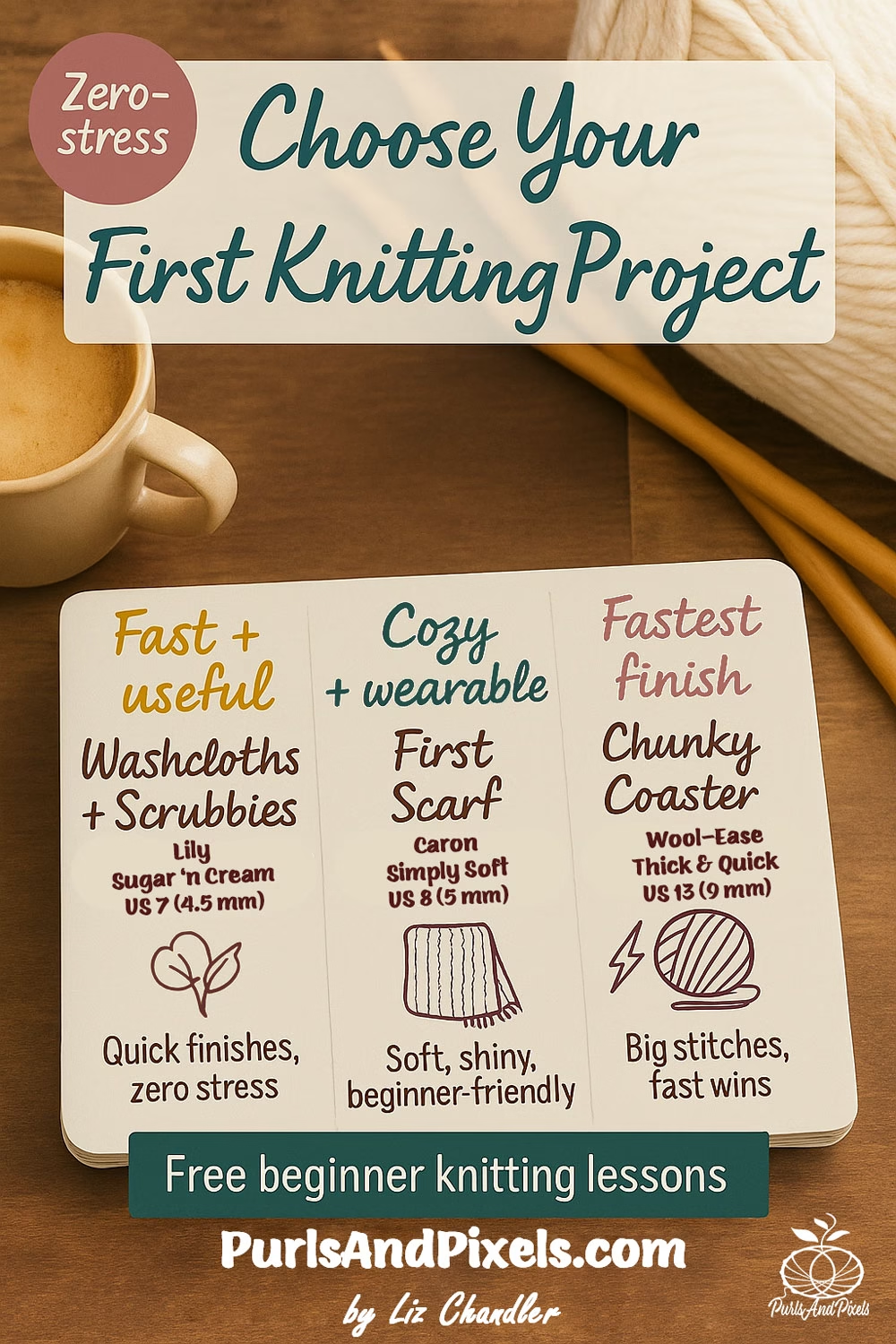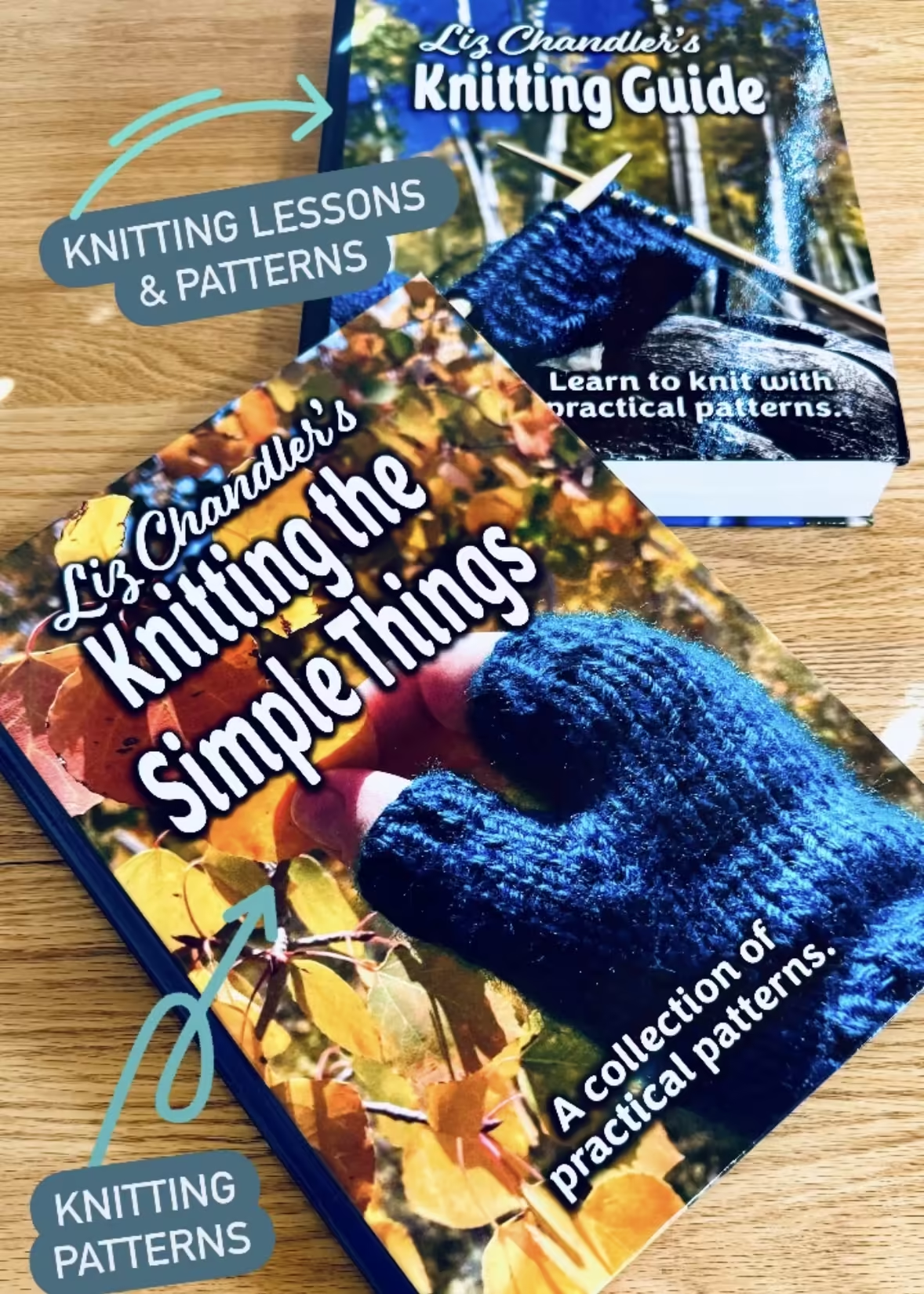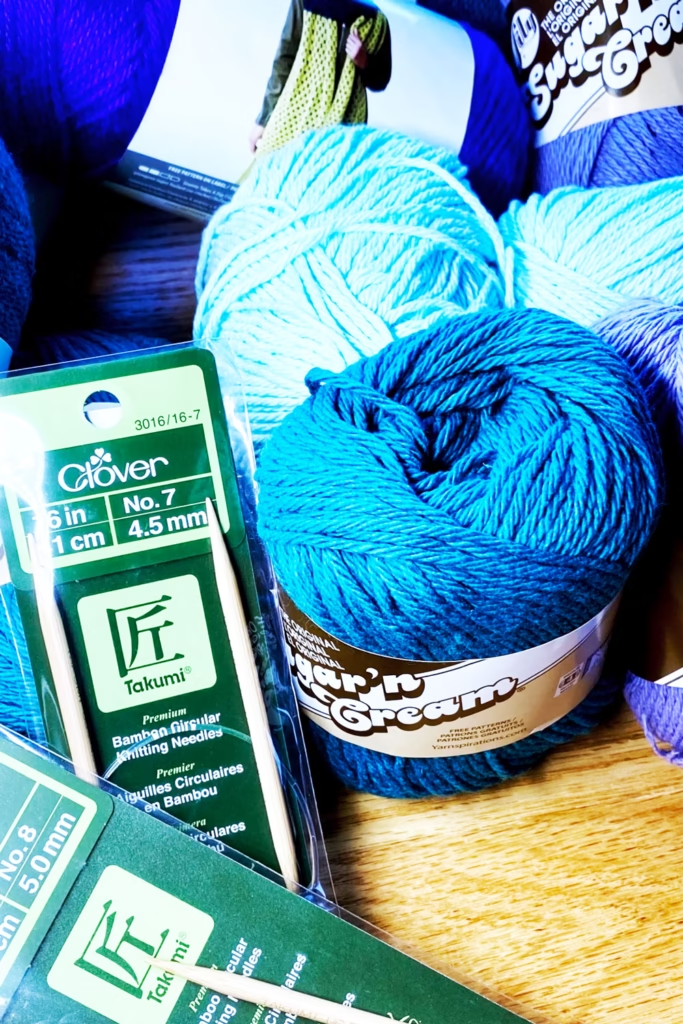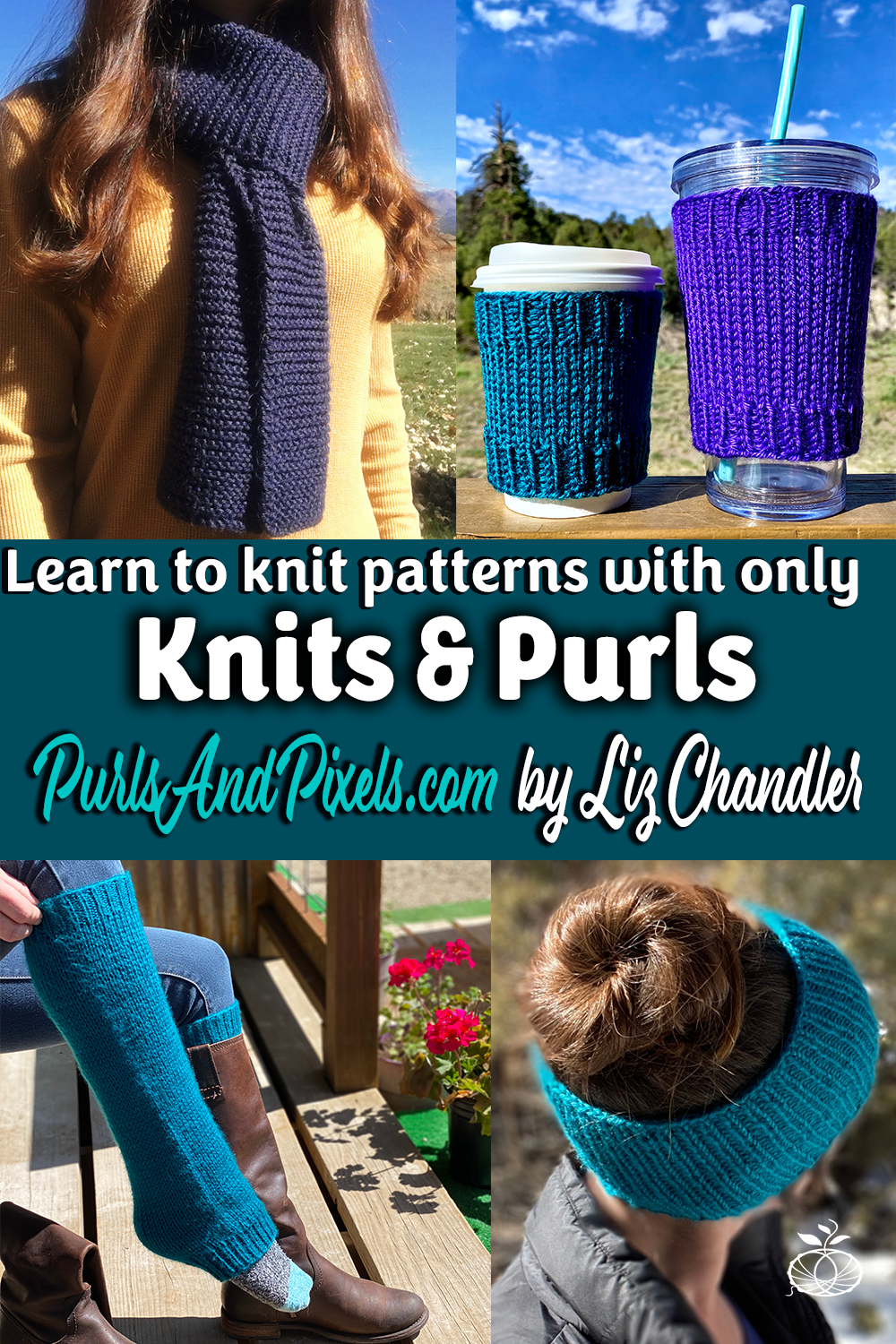Knit with Liz Chandler @PurlsAndPixels 🧶
Who doesn’t love a warm, cozy scarf? 🧣 And guess what? Even if you’ve never picked up knitting needles before, you can create a beautiful hand-knit scarf! This simple garter stitch scarf is perfect for beginners: it’s easy, practical, and makes a great gift. Don’t worry if you’re just starting out. Take it one stitch at a time, and you’ll be knitting with confidence in no time! Grab my Beginner Scarf Knitting Pattern, open it in a new tab, or print it out to follow along. You’ve got this! 🎉
🎥 Watch the full process here or keep reading to see each step broken down.
What Materials Do I Need to Knit a Scarf?
Yarn to Knit Scarves
One or two (2) 315-yard/6 ounce skeins of Caron Simply Soft yarn in your choice of color (in the video I use the color “Pagoda“).
- one mini scarf uses 10.5 yards (0.2 ounces)*
- one standard scarf uses 304.5 yards (5.8 ounces)*
- one extra-wide scarf uses 420 yards (8 ounces)*
*Weights estimated with Caron Simply Soft yarn; other yarn weights may vary.
Knitting Needles for Beginner Scarves
Knitting Needles:
36-inch (91 cm) long US No. 8/5MM circular needle (or size needed to obtain gauge)
Or 9-inch (23 cm) long US No. 8 (5 mm) straight needles (or size needed to obtain gauge)
Notions to Finish Knit Scarves
What Skills Will I Need to Knit a Scarf?
Weave in Loose Ends on Flat Knits
How to Knit a Scarf
Step 1: Cast On
First, cast on Row 1. This means you’ll be adding stitches to your needle to start your scarf.
For the mini beginner scarf, use the long-tail cast-on method to put 6 stitches on your needles.
Step 2: Turn Your Work
When you reach the end of your row, it’s time to turn your work.
Step 3: Knit Every Row (Garter Stitch)
Now that your stitches are on the needles, it’s time to create your scarf. We’ll be using the garter stitch, which means knitting every stitch in every row for a soft, stretchy texture.
- Row 2: Knit across all 6 stitches.
- Repeat Row 2 until scarf measures 12 inches (30 cm) or your desired length.
- Pro Tip: If you want a wider or longer scarf, simply adjust the number of stitches cast on or knit more rows.
Step 4: Bind Off
Once your scarf is as long as you like, it’s time to bind off and secure your stitches.
Step 5: Weave in Loose Ends
Finally, weave in any loose yarn tails using your darning needle. This will give your scarf a polished, finished look.
Troubleshooting Tips
- Counting Stitches: You should always have 6 stitches on your needle when knitting the mini scarf.
- Tension Check: Your stitches should be even: not too tight or too loose. Learn more about knitting tension for extra pointers.
- Mistakes: Dropped a stitch? No worries! Check out my knitting troubleshooting guide for easy fixes.
Care Instructions
- Machine wash cold 🧺
- Lay flat to dry 🌬
- Avoid fabric softener to keep your scarf soft and breathable
Congratulations! You Just Knit a Scarf! 🎉
Your handmade scarf is perfect for:
✅ Staying cozy in winter
✅ A thoughtful handmade gift
✅ Practicing new stitches
✅ Styling up any outfit
📸 Share your finished scarves with @PurlsAndPixels. I’d love to see your creations!
Need help? Drop a comment below, and I’ll walk you through any tricky spots. Remember, every knitter started exactly where you are now. 💕
Ready for More Knitting Patterns?
Now that you’ve learned to knit a classic beginner scarf, try one of my other scarf designs:
🧶 Easy Chunky Knit Scarf – Super cozy and knits up in a weekend! (Free!)
✨ School Colors Scarf – Show your team spirit with this fun striped pattern (Free!)
🌿 Ribbed Scarf – Add beautiful texture to your next scarf (Free!)
💫 Slipped Stitches Scarf – Ready to learn a new stitch? This one’s gorgeous! (Free!)
🎨 Single-Row Striped Scarves – A modern take on stripes ($9.99)
Let me know which one you’re casting on next! I love seeing your projects 🧶
Don’t Miss a Stitch! 🧶
Love cozy knitting projects? Sign up for my newsletter to get more free patterns, helpful tips, and updates straight to your inbox. 💌














































